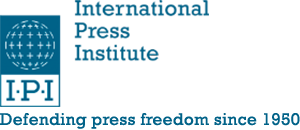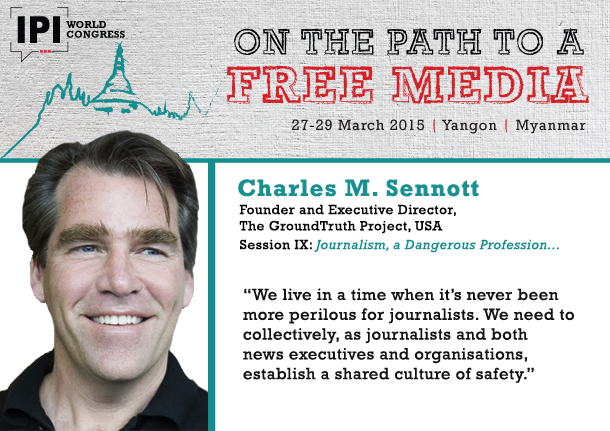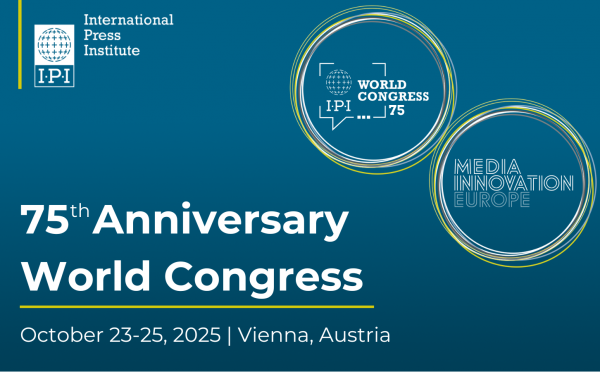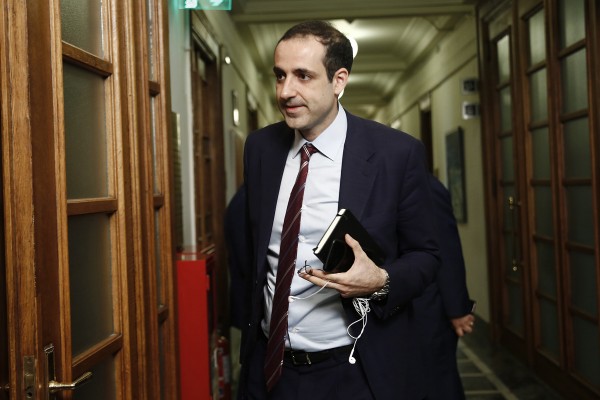In a time when journalists are faced with increasingly dangerous situations on the job, how are news organisations banding together to build a culture of safety for journalists in danger zones?
Charles M. Sennott, vice president, editor-at-large and co-founder of GlobalPost, will be among the participants examining this question at the International Press Institute’s (IPI) 2015 World Congress and General Assembly from March 27 to 29 in Myanmar.
On March 28, Sennott will take part in the session “Journalism, a Dangerous Profession: How Do We Stop the Killing of the Messenger?” with Shireen Abu Afash, widow of Gaza journalist Ali Abu Afash; Rasheeda Bhagat, editor of Rotary News of India; and Ibrahim Saber, a Qatar-based Reuters producer. Supported by the Doha Centre for Media Freedom (DCMF), the session will be moderated by Dr. Robert Meeds, head of the Mass Communication Department at Qatar University, and will examine how editors and news organisations can promote the highest safety standards for journalists who find themselves in harm’s way.
Registration for IPI’s World Congress and General Assembly is still open! More information, including the full programme, is available at 2015.ipiworldcongress.com.
As a seasoned, award-winning journalist who has worked from the front lines of conflicts in at least 15 countries, Sennott has firsthand experience with the dangers facing journalists. He shared that experience with international news editors from the United States and Canada during the third meeting of the IPI Foreign Editors Circle in Chicago in September 2014, where participants began work on developing safety principles and best practices for how news organisations and freelancers should work together in conflict zones.
That work led directly to a set of practical guidelines unveiled on Feb. 12, 2015 at an event at the Columbia School of Journalism. Organisations such as Reuters, AP, the Frontline Freelance Register, the Committee to Protect Journalists, the Overseas Press Club of America, the GroundTruth Project and the Pulitzer Center for Crisis Reporting, among others, have endorsed the guidelines.
With one week left before IPI’s 2015 World Congress in Yangon, Sennott discussed new trends in journalist safety with IPI and the challenges news organisations need to address concerning sustainable safety standards.*
IPI: Have you been to Myanmar before? As you prepare to travel to Yangon for IPI’s 2015 World Congress, what do you expect and is there anything you hope to learn?
Sennott: I have been to Myanmar with The GroundTruth Project, a fellowship of 20 top young journalists, half of whom were American and half of whom were Burmese. We had them work together as a team and travel to five different corners of Burma, where they produced a report which was published on GlobalPost, called “A Burmese Journey”.
This fellowship was motivated by the core ideas of The GroundTruth Project, which is people-to-people diplomacy by getting journalists to work together from across different national and cultural perspectives… to produce in-depth projects in emerging democracies…. We worked with other media partners inside Burma on this project as well, [including] local newspapers and Radio Free Asia. The work was published in English at GlobalPost and in Burmese on Radio Free Asia and across several different organisations.
In returning to Myanmar, I’m looking forward to seeing how far along the country is on its path to democracy and the opening of its press, a process we hope some of the young journalists we worked with are still very much a part of.
IPI: Myanmar is enjoying the greatest degree of media freedom that it has seen in many years, yet many journalists still run the risk of detention or attack. Have you seen any culture of protection for journalists developing?
Sennott: I think there’s no stopping the momentum towards democracy that Myanmar has undertaken and the opening up of the free press is a part of that movement, but I think anyone who lives there and who watches Myanmar on this dramatic journey going forward would recognize that it still has quite a way to go.
I have not spent enough time there recently to accurately evaluate if there is a culture of protection but from afar, and from our contacts and friendships we developed through our projects, our understanding is that there is still a great determination to have a free press in Myanmar.
IPI: What to publish and when is a serious issue for journalists in areas where security and safety may be at risk, but where stories need to be told. What is the greatest challenge for editors and media agencies in supporting journalists in danger zones?
Sennott: The greatest challenge we face in journalism is to find the business model that will sustain in-depth reporting, particularly in-depth and contextual reporting in places that are hard to get to, in places where the work can often put reporters in peril. The key is to have a model where those resources are provided and stay with the stories. But, if the resources are not available, news organisations should not put freelance, or any, journalists into harm’s way.
If they don’t have those deep resources that you need, as well as a lot of experience in risk analysis and in guiding reporters in the field from experienced editors back home, I think we have to be careful, in the age of disruption and new media where there are a lot of financial pressures on news organisations, not to try to do it on the cheap and not to put journalists in harm’s way without very careful consideration for their safety.
We live in a time when it’s never been more perilous for journalists. We need to collectively, as journalists and both news executives and organisations, establish a shared culture of safety. I think we still have a long way to go to implement that.
IPI: IPI’s North American Committee recently played a key role in developing a set of safety guidelines to help freelancers in conflict zones and news organisations that purchase their content. What are your thoughts on the guidelines – do you see any drawbacks or room for further improvement?
Sennott: IPI’s role in spurring us to begin the process to draft the guidelines was instrumental. There’s no question that IPI was a catalyst and other important advocacy groups, news organisations and individual journalists came together to work hard to draft those principles and I think it’s got great momentum.
I’m very proud that The GroundTruth Project has been at the center of this effort with other colleagues. I think all of us have felt the collegiality of confronting a moment in time when so many colleagues have been captured, killed, intimidated, threatened and bullied. To come together to confront that and find a way to be sure we build a culture of safety has been an important initiative and one that I might even say, is historic. Never have so many news organisations – more than 50 now – signed onto one document that would combine them in a shared culture of standards and practices and I think this agreement now needs to be implemented and put forward into the field and that’s the next big challenge.
IPI: ‘Citizen journalists’ are also often critical to reporting on areas that are difficult to access. What changes have you seen in recent years in how editors and agencies handle content generated from these sources?
Sennott: I think citizen journalism opens up great possibilities for all of us to understand the world from a more local perspective than we’ve ever had in our lives, particularly international stories from faraway places that are hard to get to. We have a new way to have eyes and ears on the ground. That said, I think we have to fall back on old school standards of verification and making sure those citizen journalists are presenting information in a way that’s fair, accurate and verifiable.
This interview has been edited and condensed.



